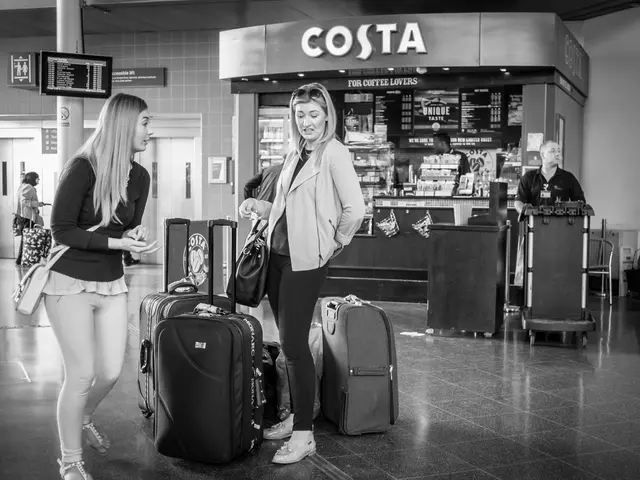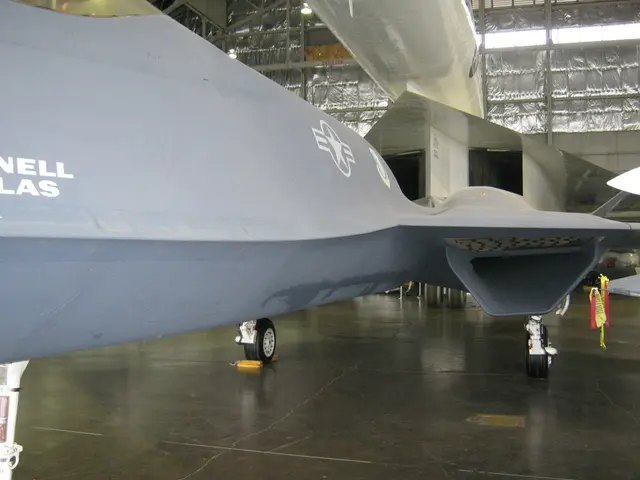Train of the Future: Deutsche Bahn's ICE L Strategy Unraveled
High-Speed Trains (ICE) Secure Initial Delivery for Railways
Deutsche Bahn, Germany's railway company, has set its sights on revitalizing its long-distance train fleet. The focus is on receiving the first four ICE L trains this year, with another nine expected in 2026. However, delays and approvals from the Federal Railway Authority could cause further delays.
But what's the deal with the ICE L? Well, the "L" stands for "Low Floor", indicating a low-floor entrance for easy access. The new fleet will boast top-notch comfort, featuring newly designed seats, adaptive lighting, power outlets, and tablet holders at every seat.
Set to replace the aging Intercity 1 trains, the ICE Ls will initially operate domestically upon delivery. With speeds of up to 230 kilometers per hour and seating up to 562 passengers, they're set to rejuvenate DB's long-distance train fleet.
The Tumultuous Journey of ICE L Trains
The journey of ICE L trains, however, has been far from smooth. With an initial order of 79 units from Spanish manufacturer Talgo, Deutsche Bahn expected the first trains to start running in Germany last fall. But manufacturing delays have pushed back the delivery schedule. In fact, the first units might not arrive until the latter half of 2025, and Deutsche Bahn may even consider reducing its order by 19 units, bringing the total to 60 trainsets.
The Catch: Delayed Arrivals and Shrinking Services
As the ICE L trains' arrival dates are pushed back, the concern arises whether Deutsche Bahn can implement its modernization plans as intended. The Passenger Association Pro Bahn voices skepticism, fearing not enough seats will be available on many connections as older trains are phased out more quickly than new ones can be brought in.
Essential connections like Wiesbaden-Frankfurt-Leipzig-Dresden and Hamburg-NRW-Bonn-Frankfurt-Nuremberg-Vienna may see reduced services, leaving passengers cramped and worried.
Modernization Amid Competing Forces
Delays in the ICE L's arrival aren't DB's only challenge. They're also dealing with the successful integration of the ICE 4 and ICE 3 Neo trains, which have already boosted the number of ICE trains and improved service quality.
Meanwhile, private operators like FlixTrain are expanding their services, placing significant orders for Talgo 230-based trains, intensifying competition in the high-speed rail market. This competition could pressure DB to expedite its modernization efforts to maintain market share and service quality.
Source: ntv.de, Matthias Arnold, dpa
Insights:
- The average age of ICE and IC trains is set to decrease from the current 18 years to 12 years by 2030, aiming for greater reliability on the rails.
- Deutsche Bahn wants to maintain a comparable number of trains with increasing seat numbers in the long term.
- Private operators like FlixTrain are expanding their services, intensifying competition in the high-speed rail market.
The community is expressing concerns about the potential reduction in available seats on essential connections due to delayed arrivals of the ICE L trains and the quicker phase-out of older trains. This situation could be alleviated with increased funding for vocational training programs for engineers and technicians in the transportation industry, thus expediting the production and implementation of new vehicles. Furthermore, exploring financial partnerships with other European railways could also help Deutsche Bahn maintain its market share and service quality amidst rising competition from private operators like FlixTrain.








